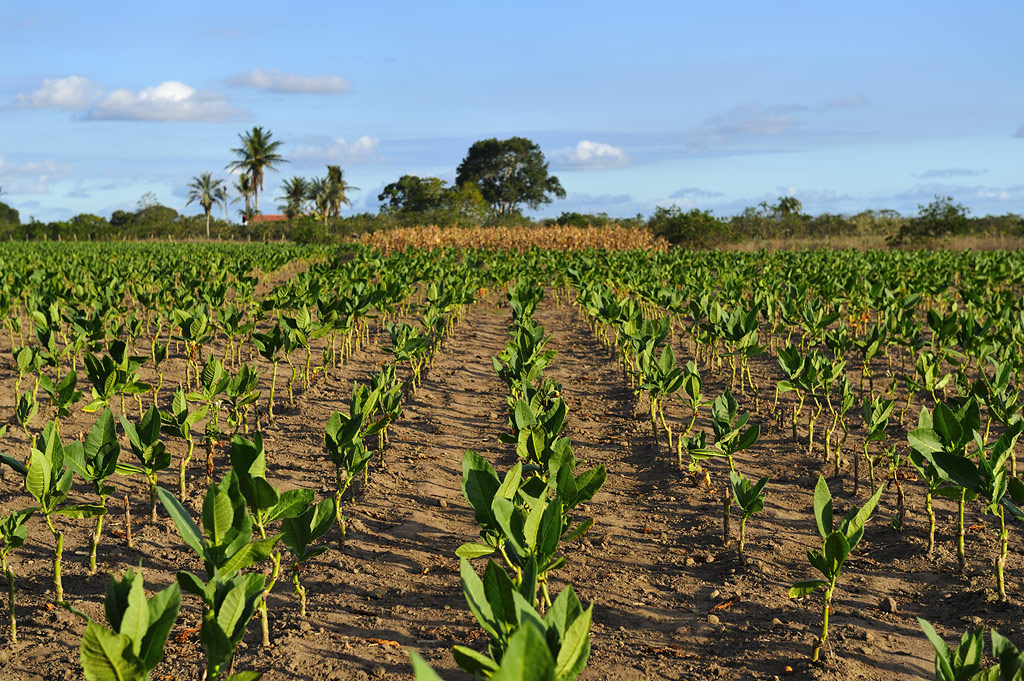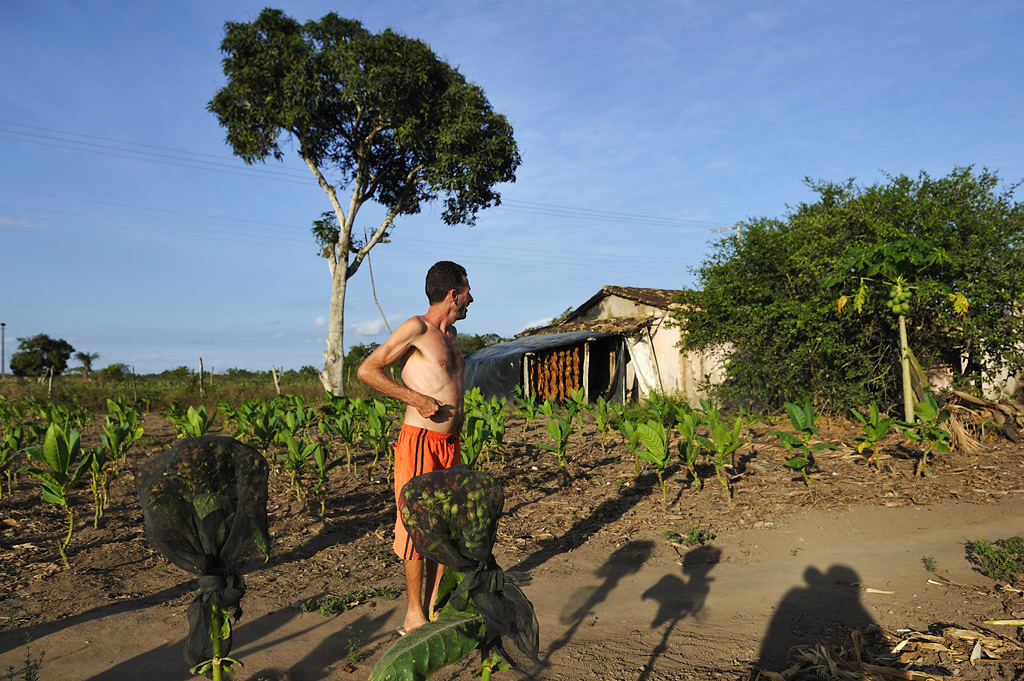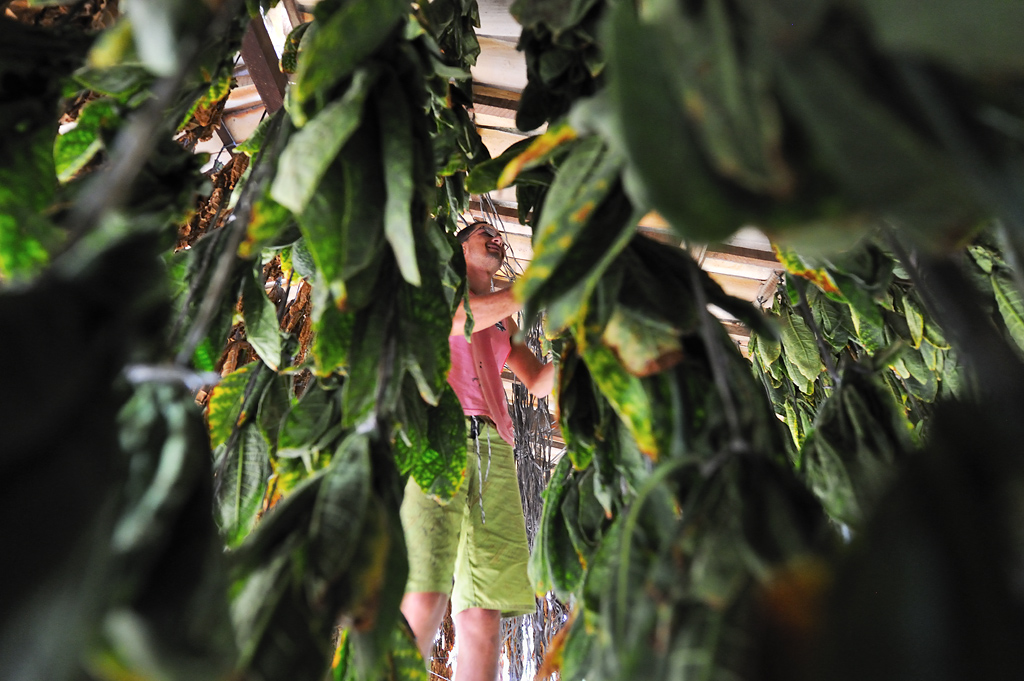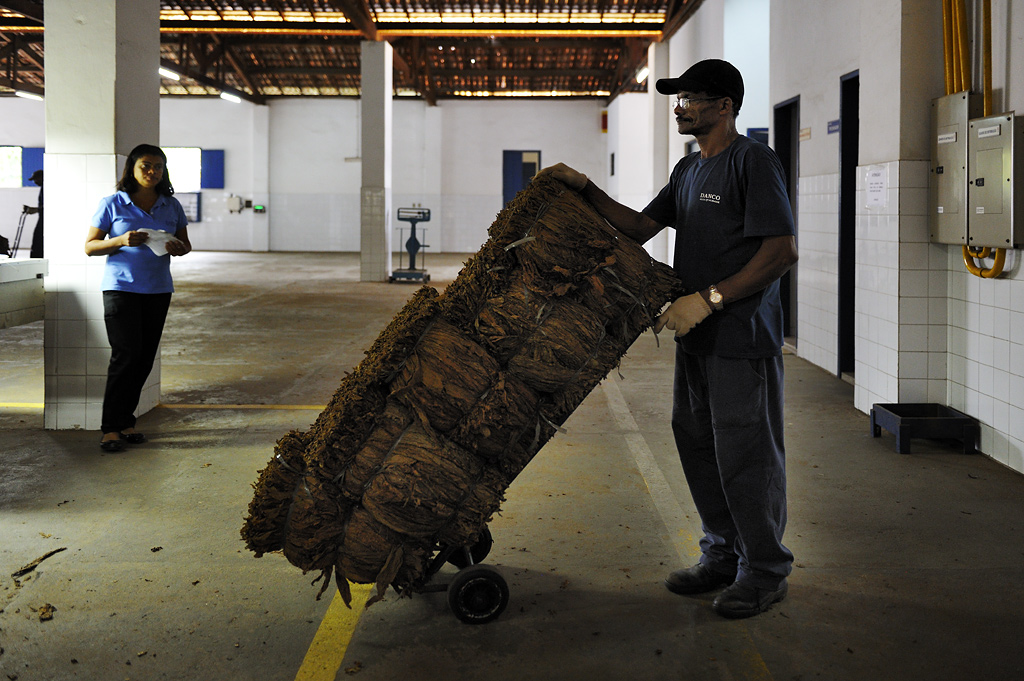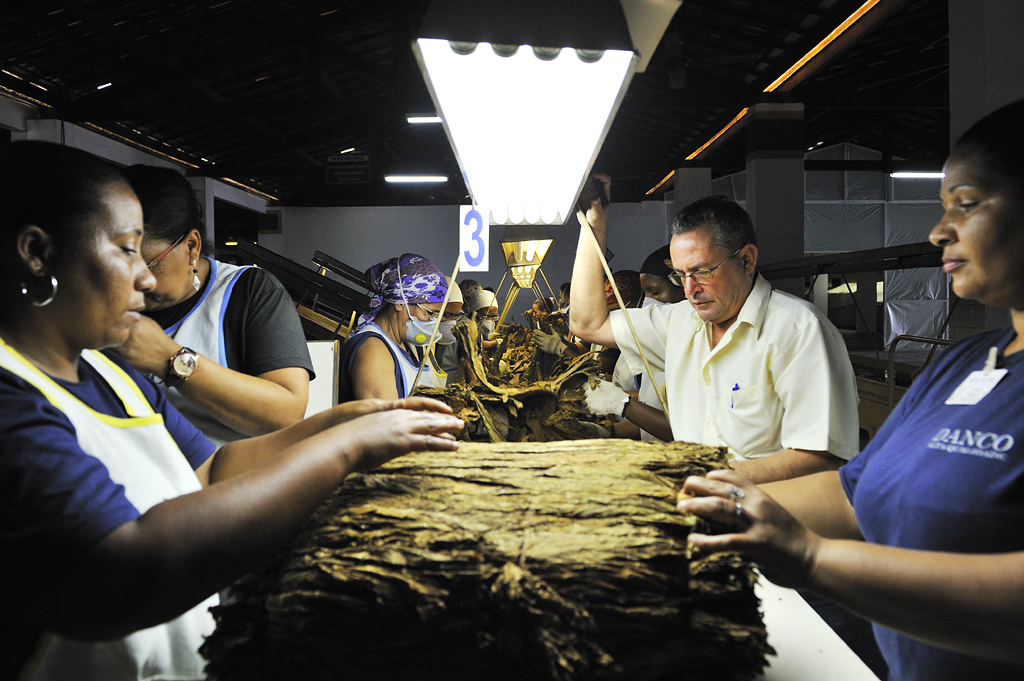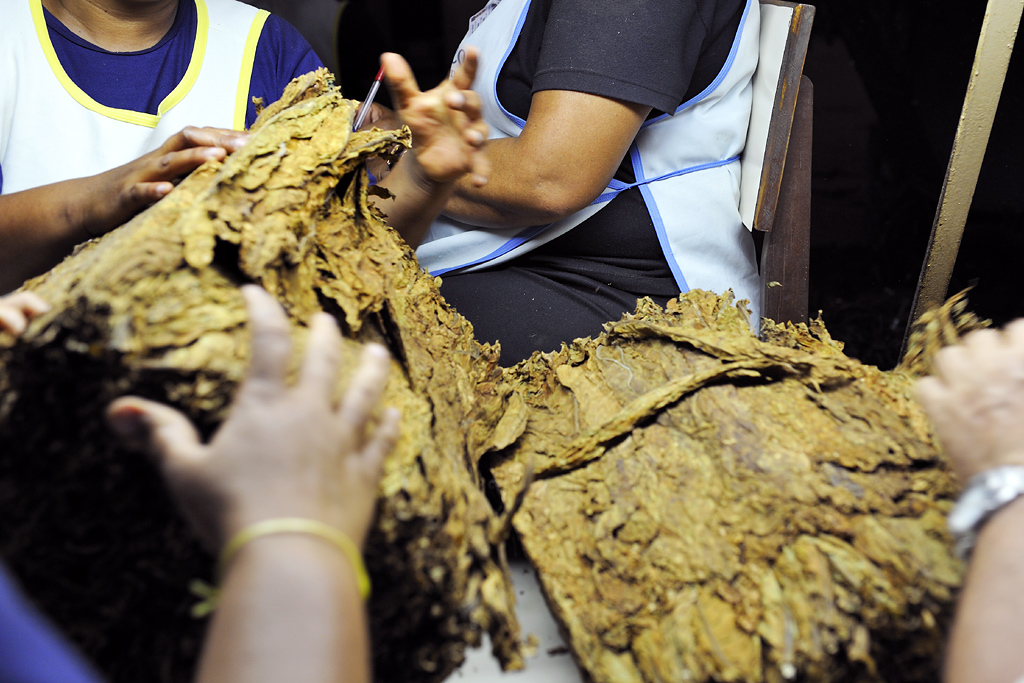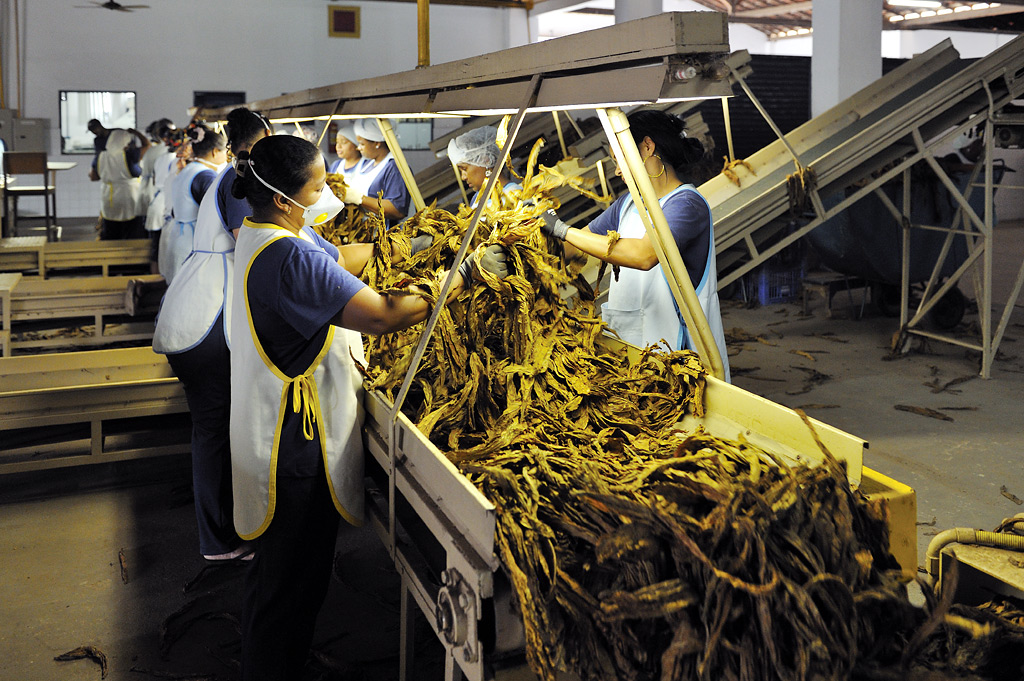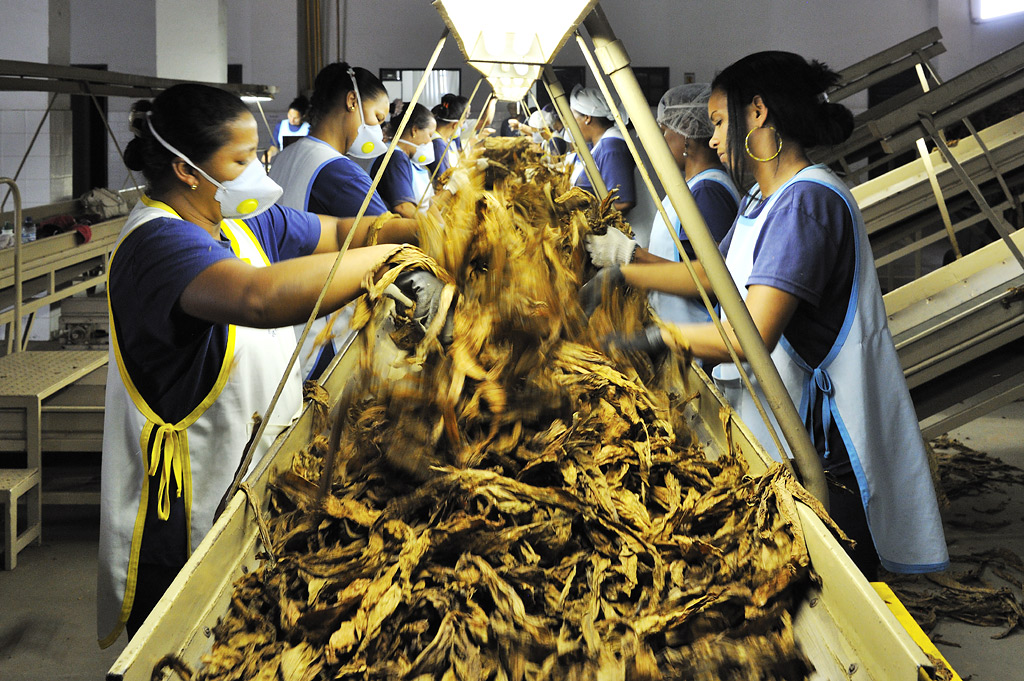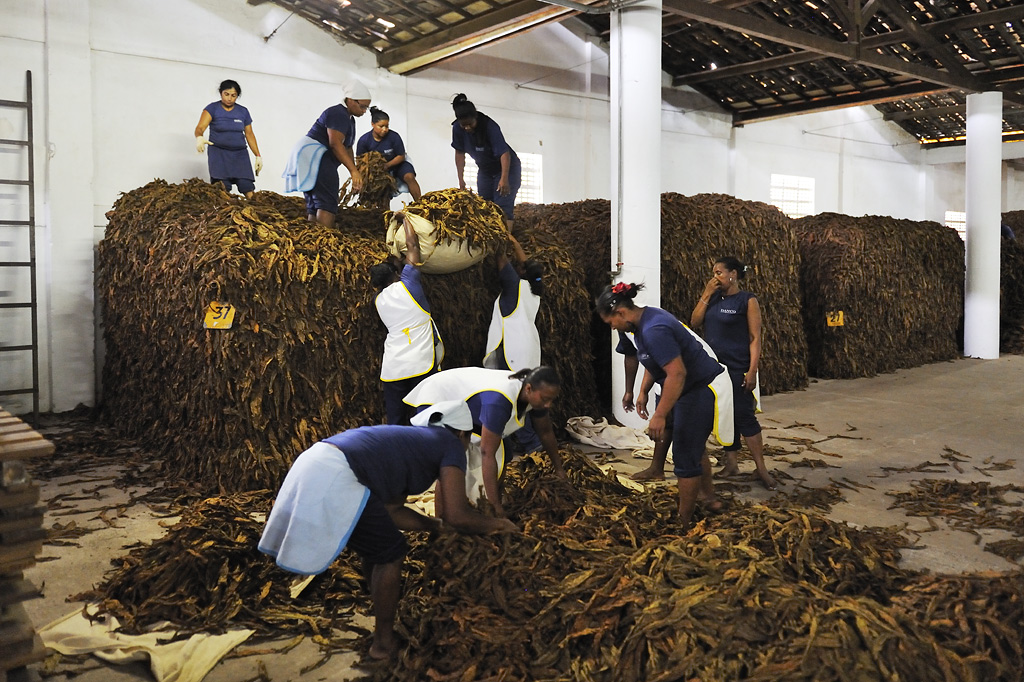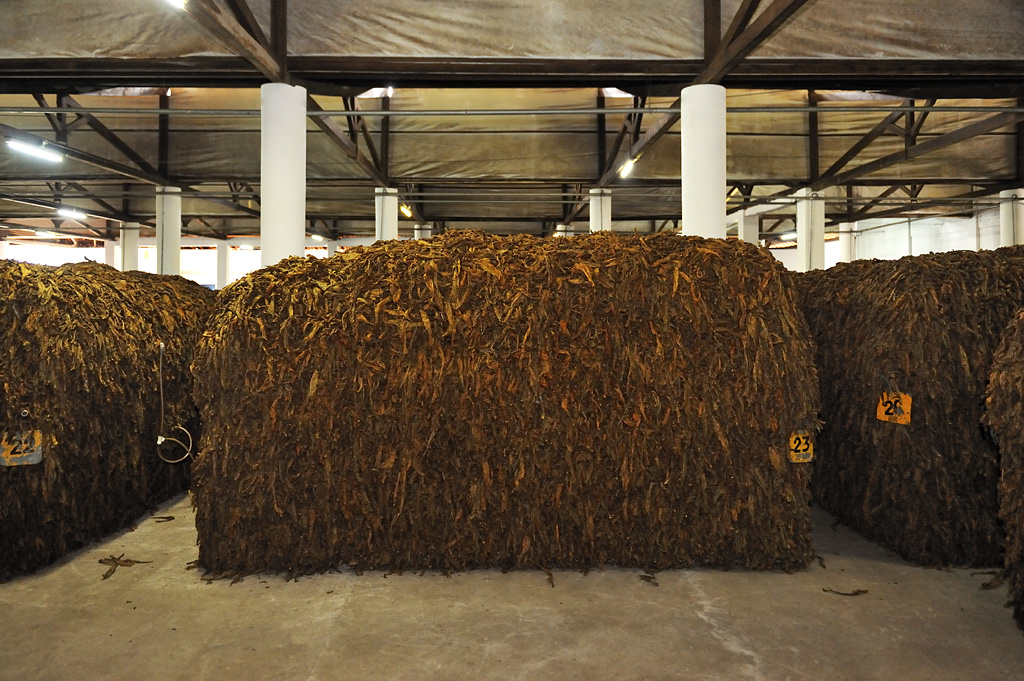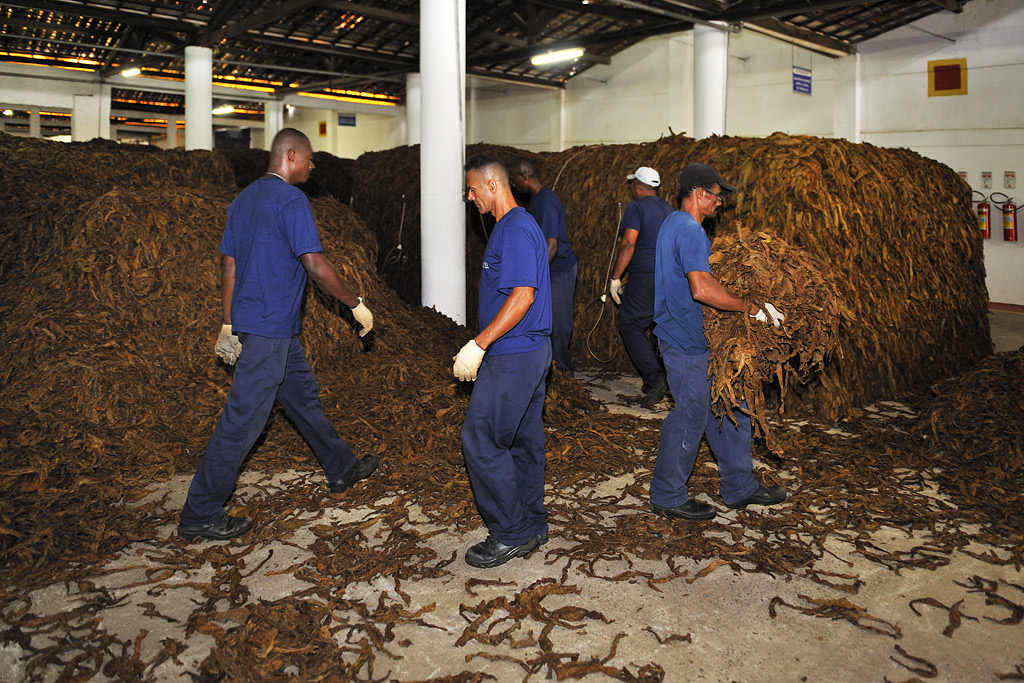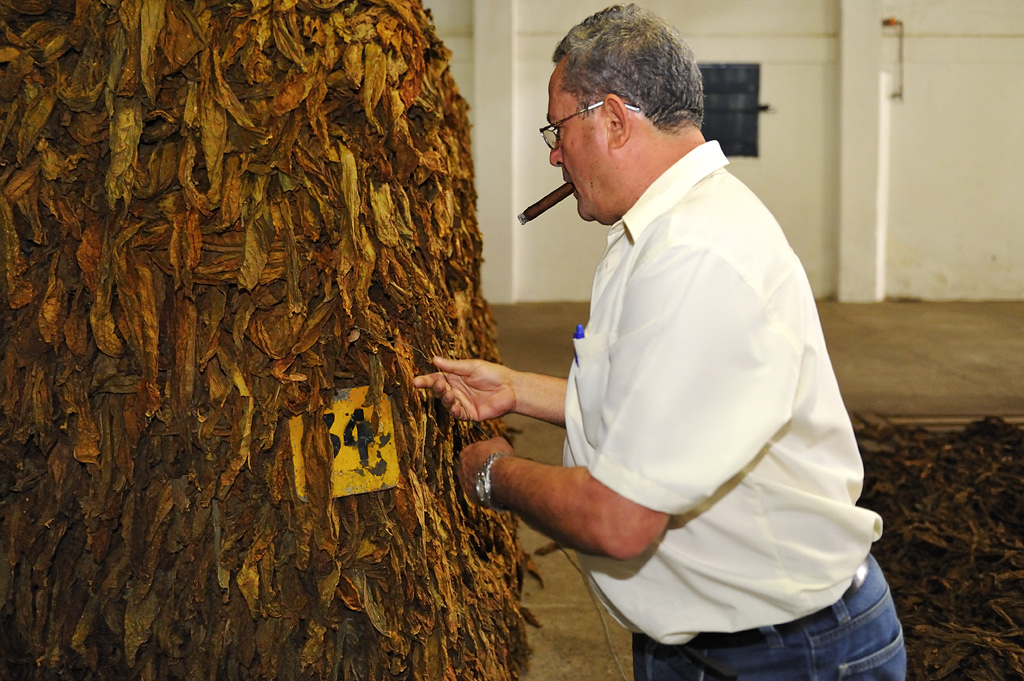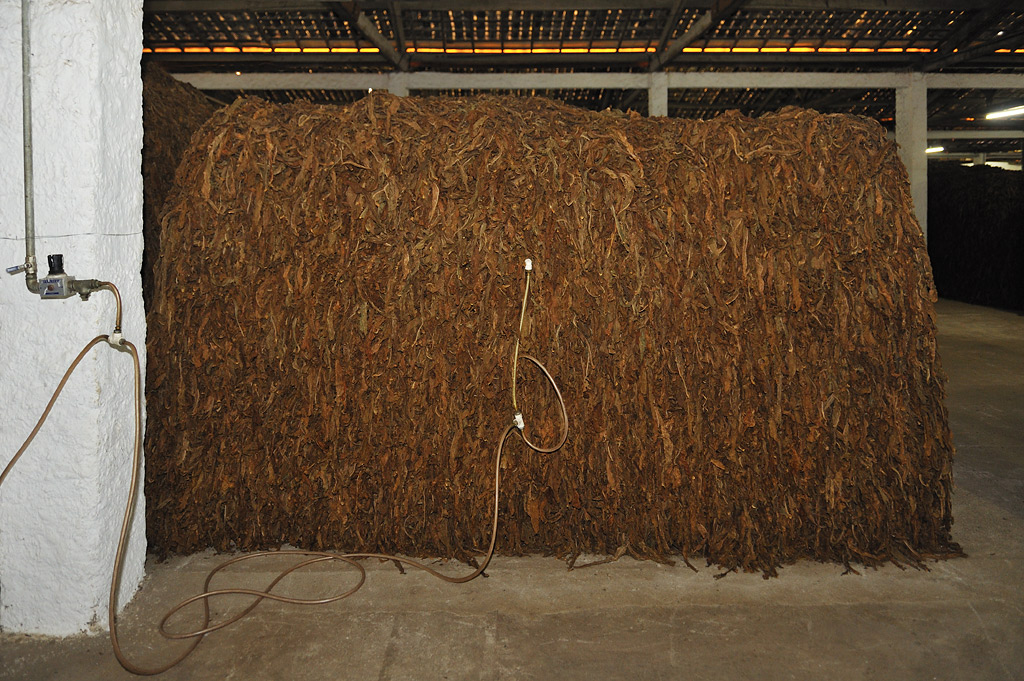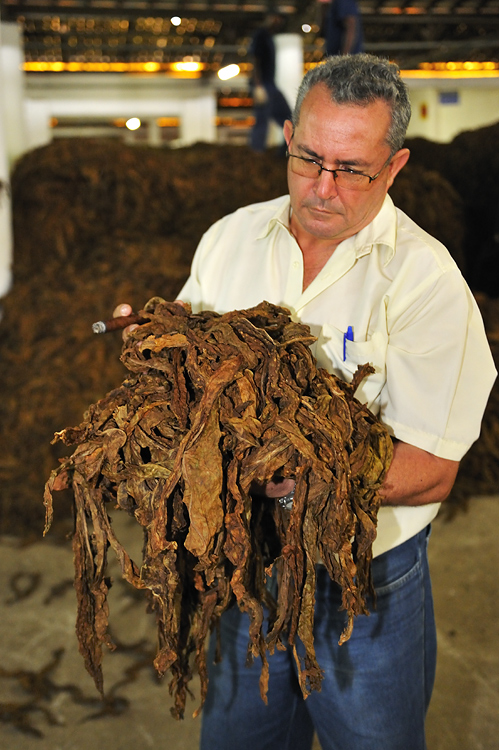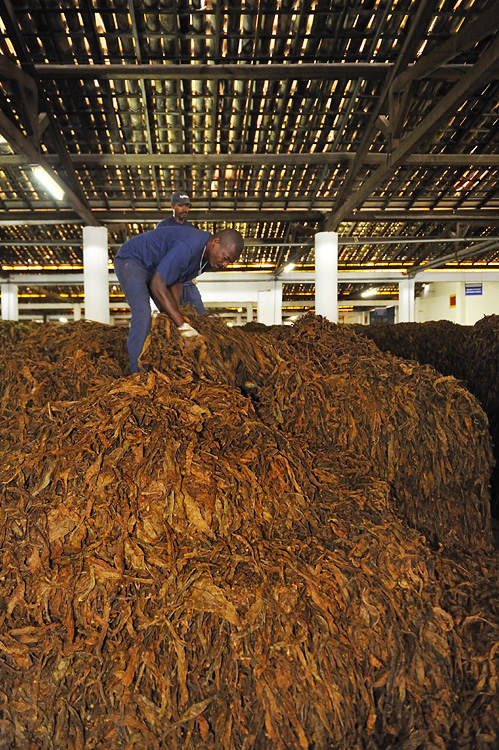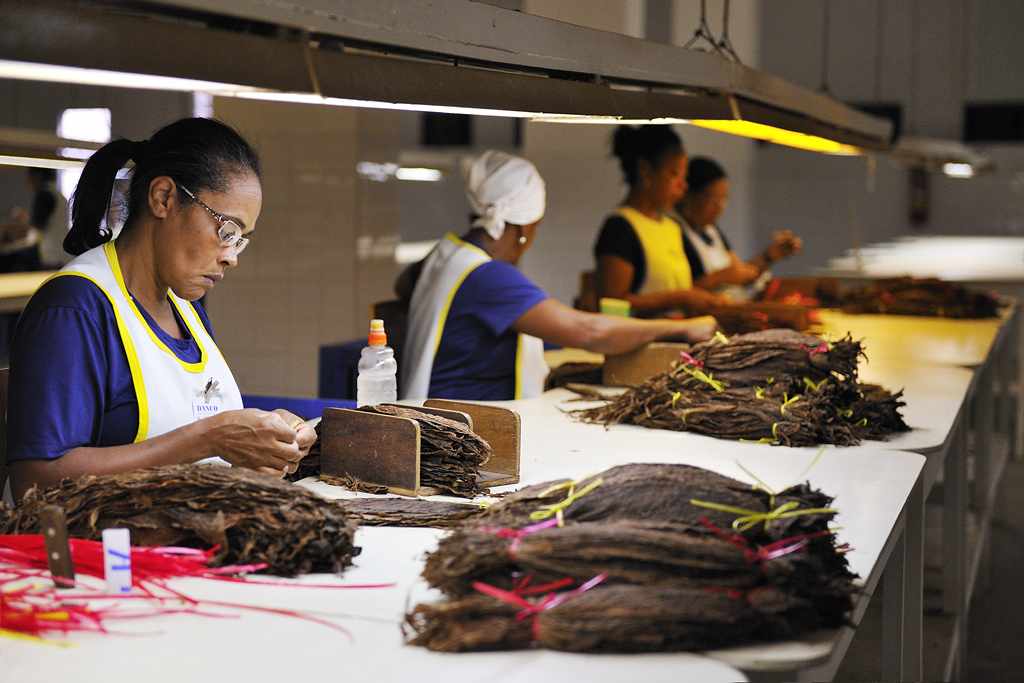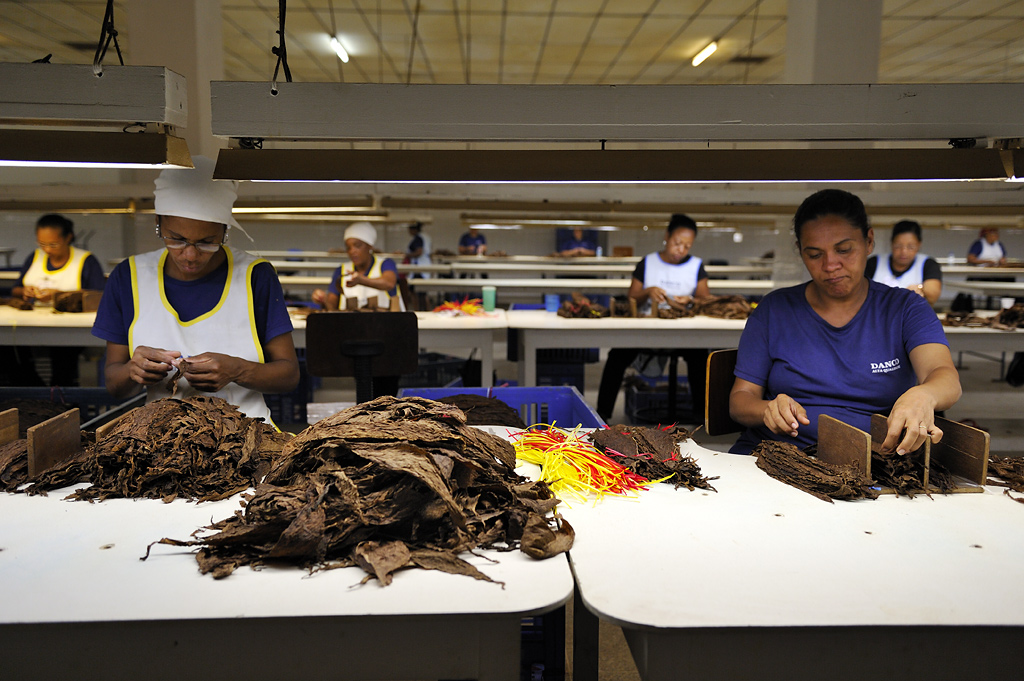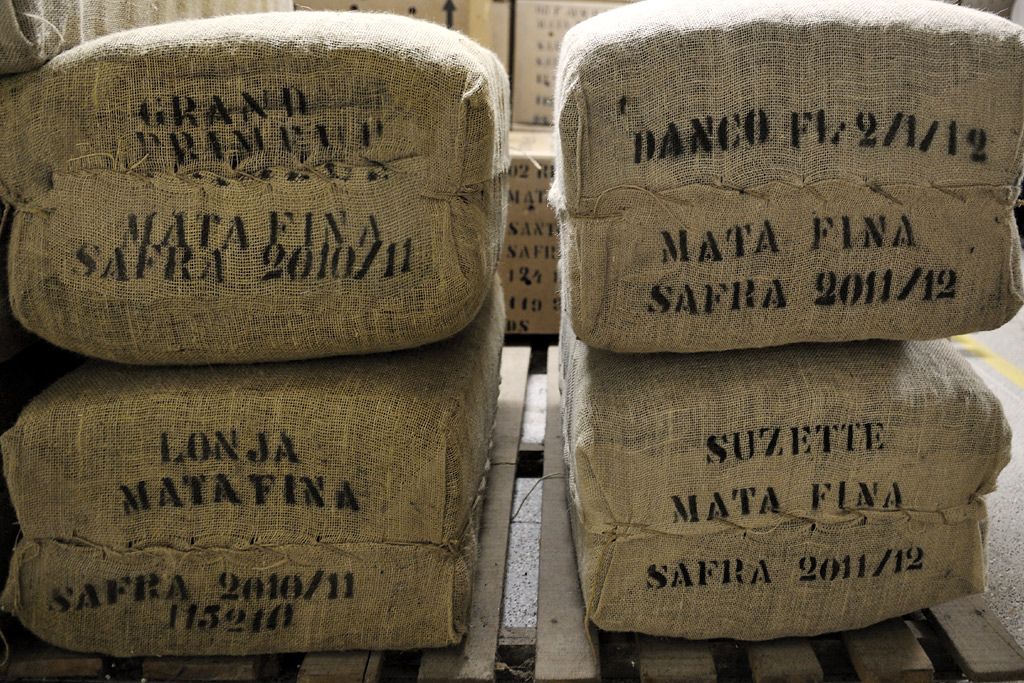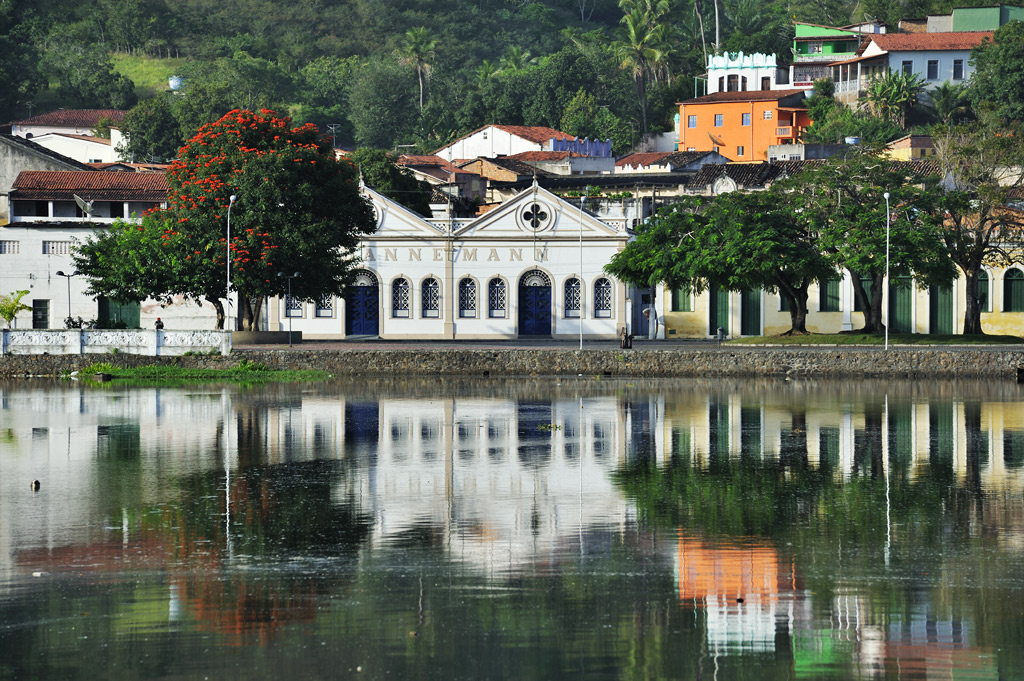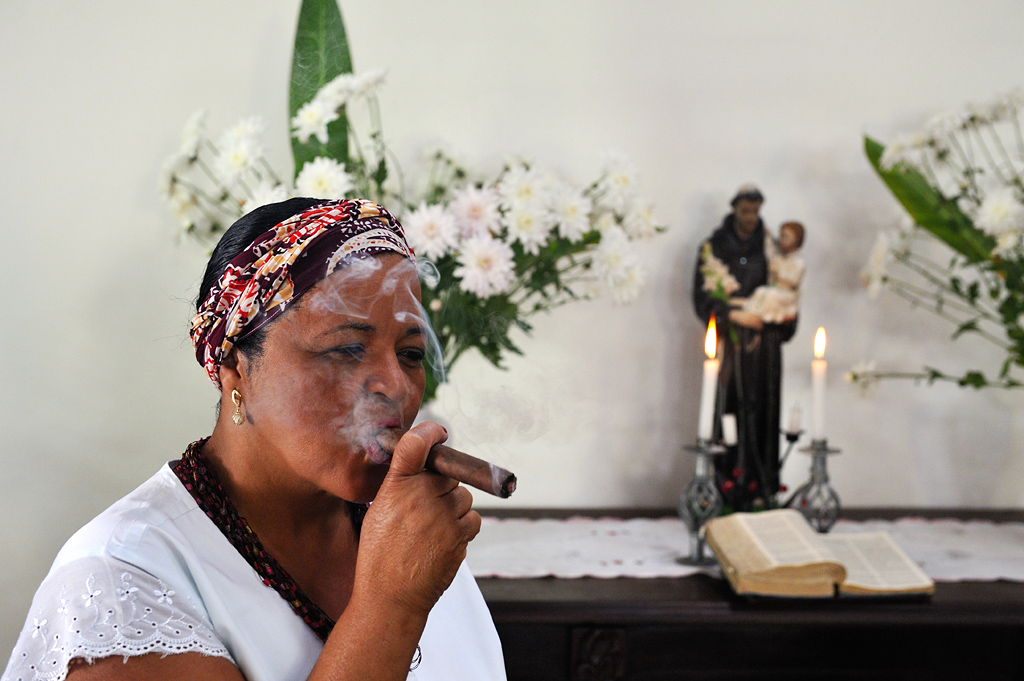page 2
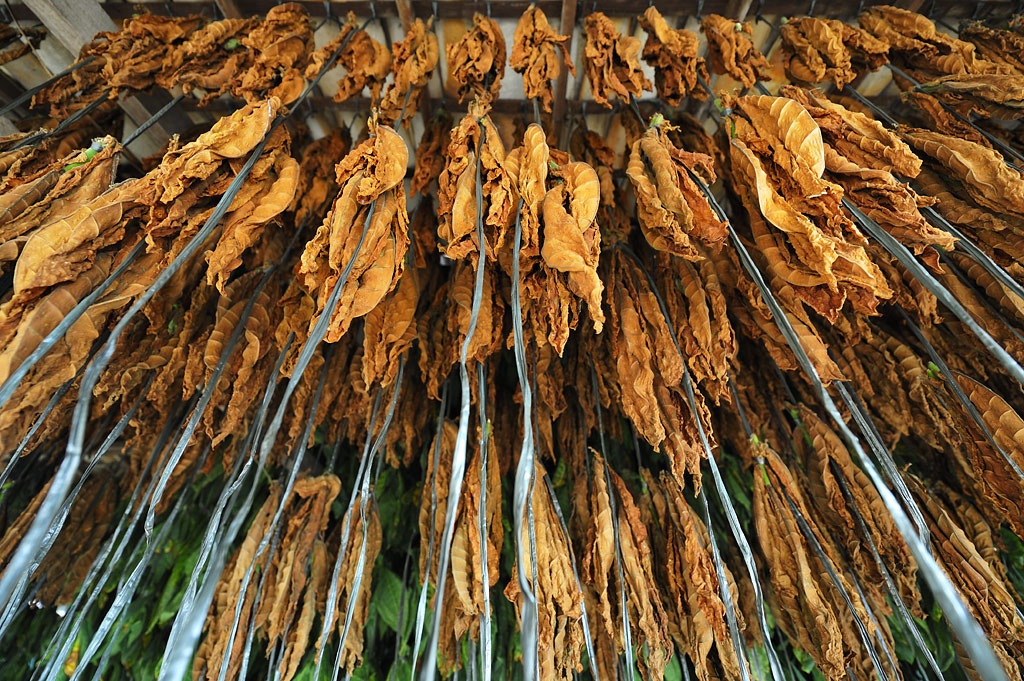
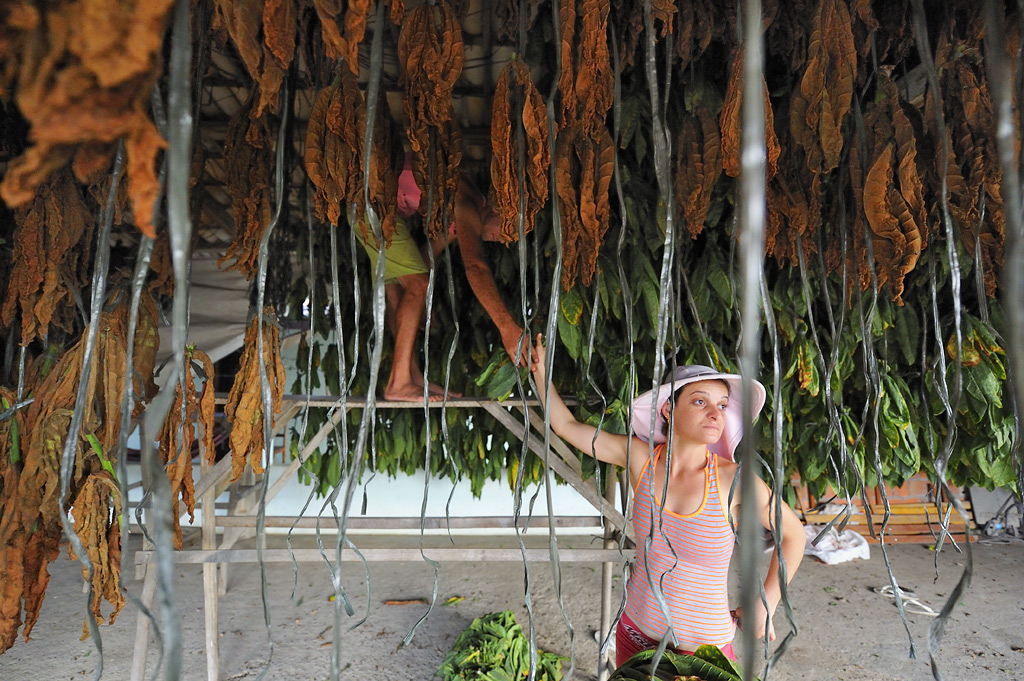
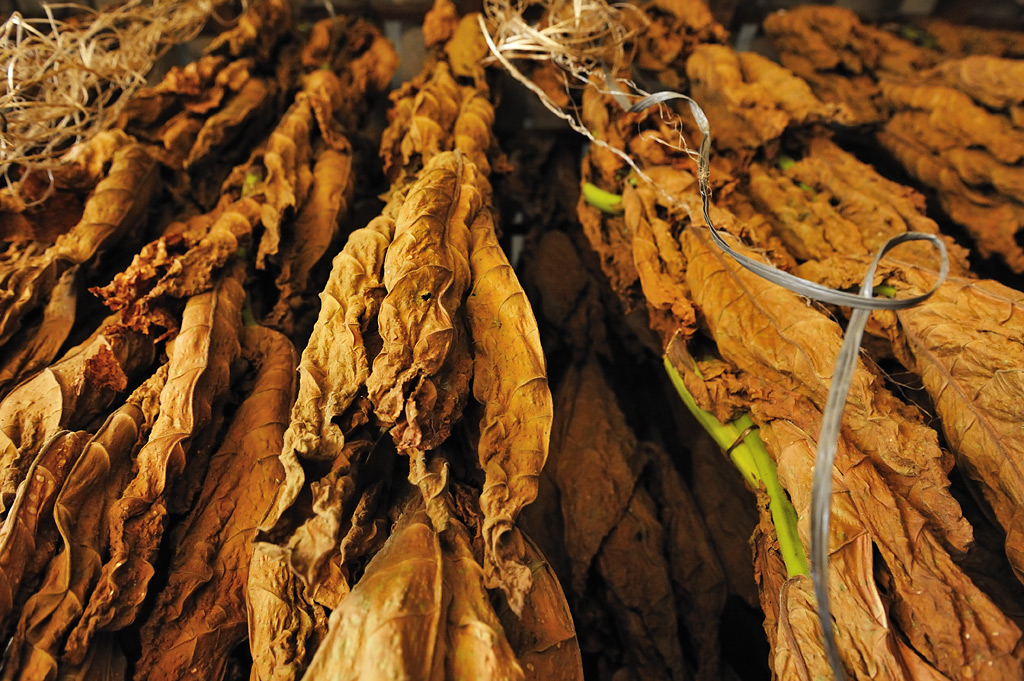
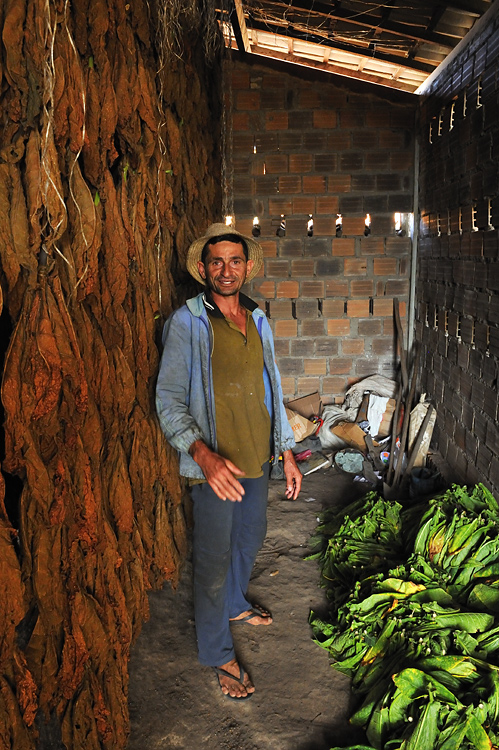
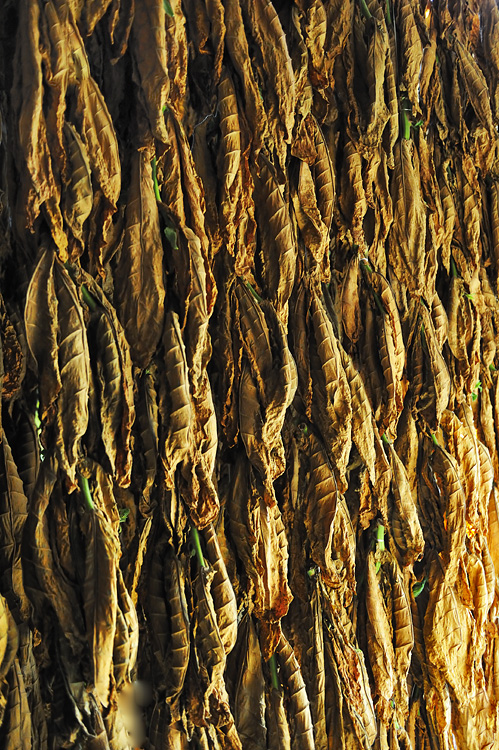
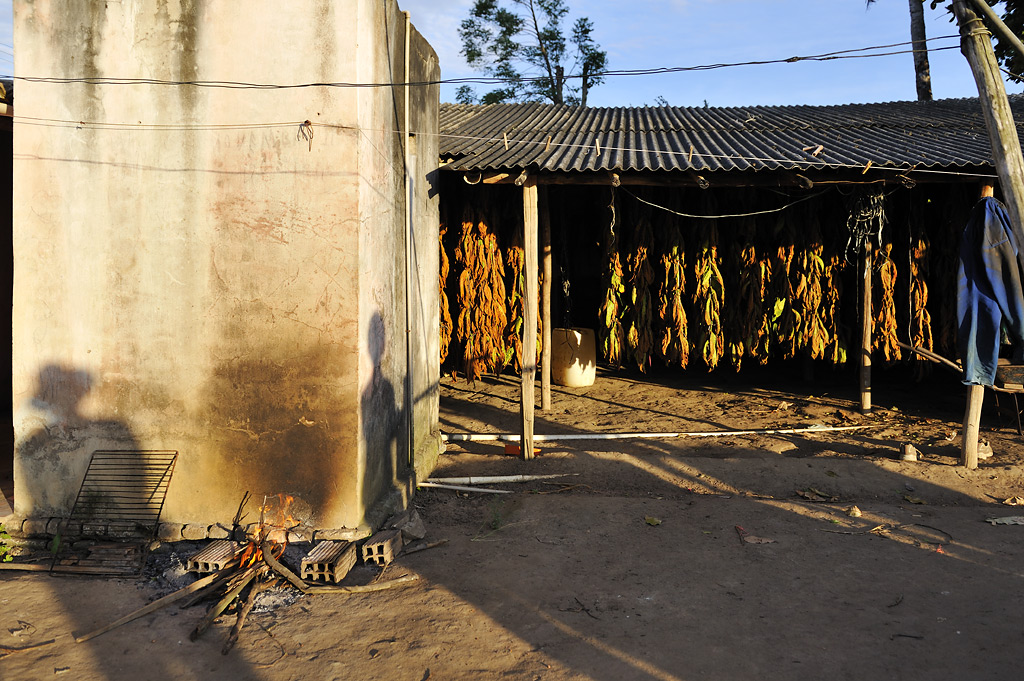
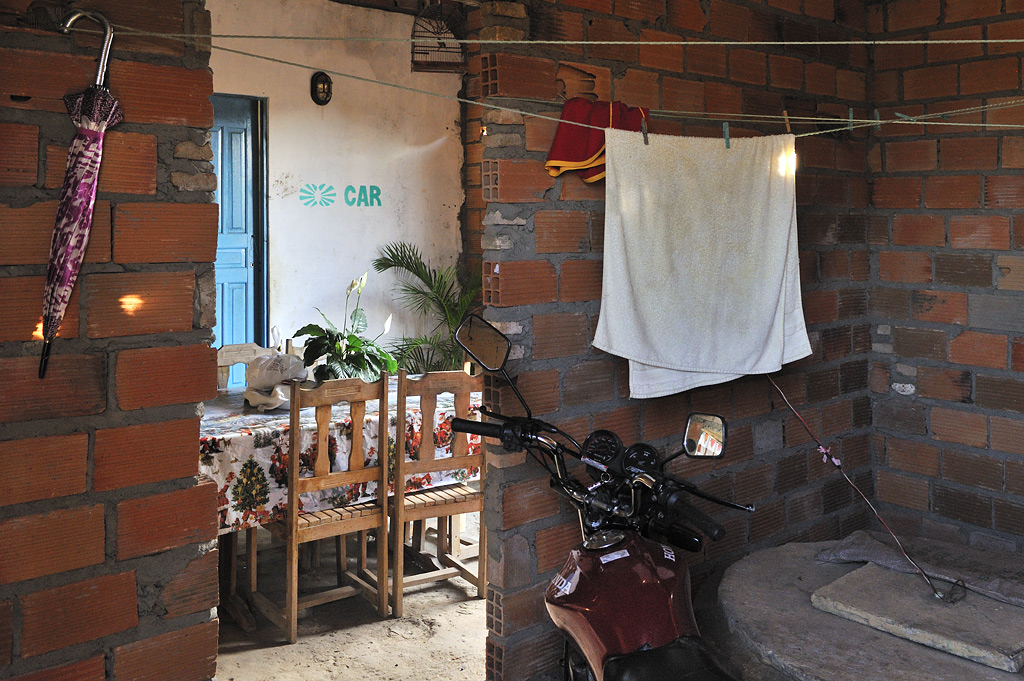
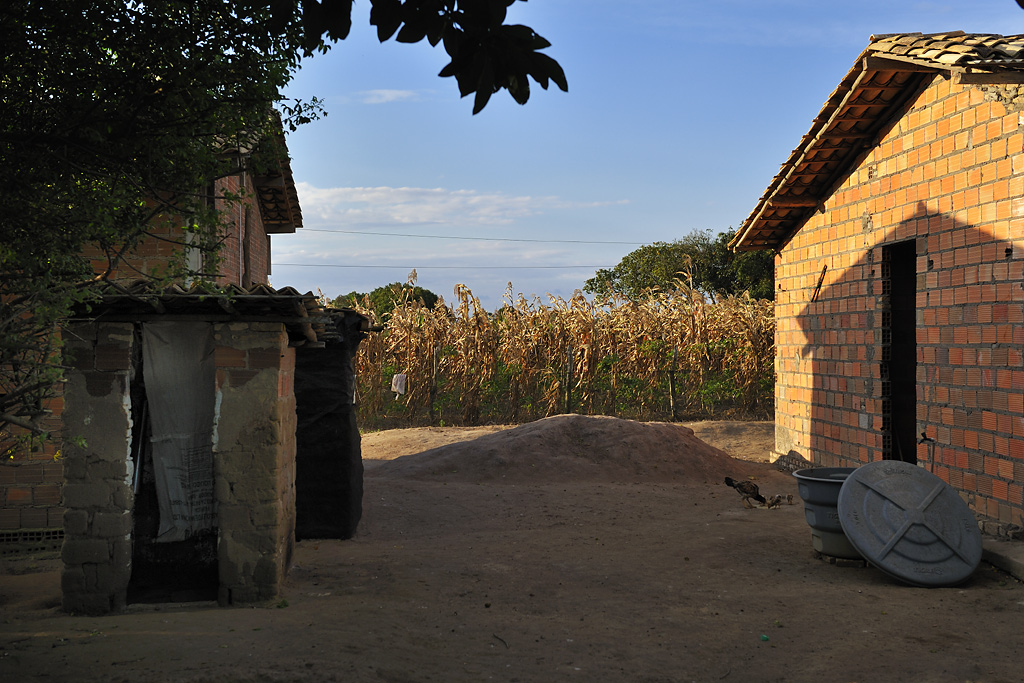
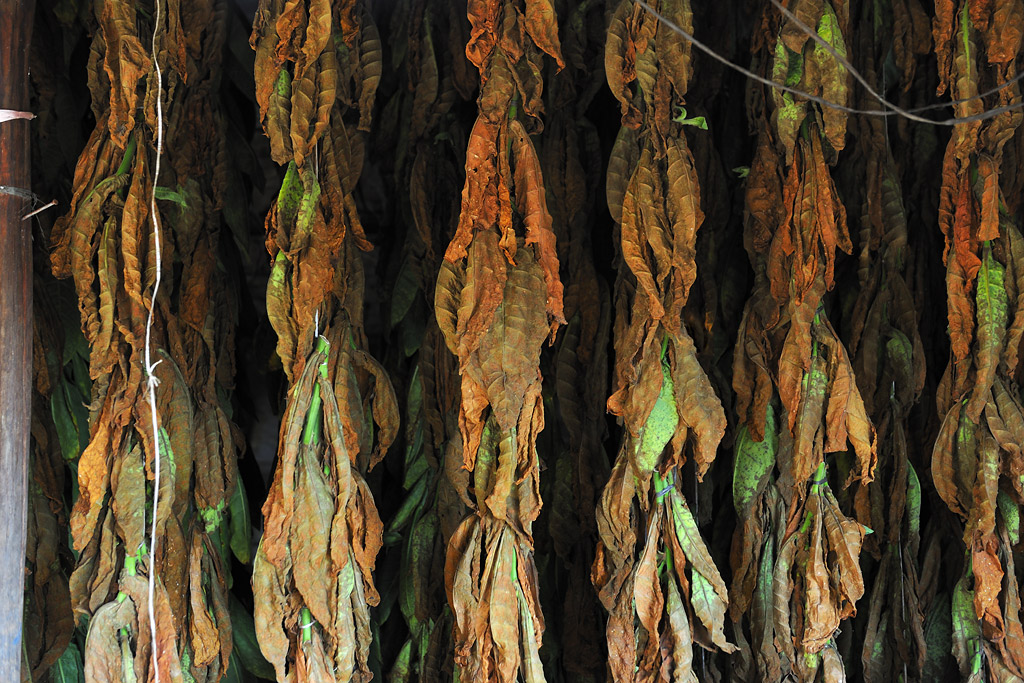
| The arrival of tobacco into Dannemann Like the other cigar factories, Dannemann also buys tobacco from the small farmers of the region. Angelo Pinto, Production Chief of Dannemann in Cruz das Almas, examines the quality (including temperature) of the tobacco on its arrival. According to the results of the quality check, he classifies the tobacco and displays the result instantaneously with the help of small number plates. Based on the quality groups the female workers sort the tobacco on a specific conveyor belt, which is indicted with a number plate (here, the number 3). Before the assorted tobacco passes over the conveyor belt to the fermentation house, it is loosened by the workers and whirled rigorously. This serves to ferment it better and helps to avoid mould. |
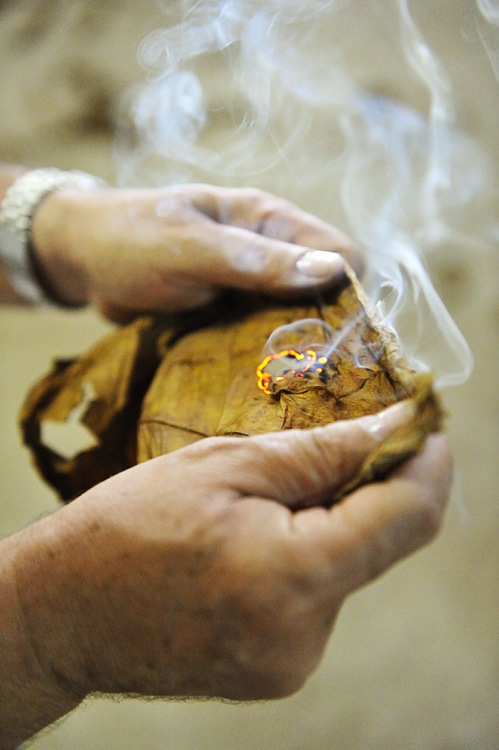
Demonstration of the burning behaviour of a tobacco leaf
| The sorting and storage of tobacco leaves The wrapper leaves are already separated for the filling and binders before the fermentation; they are also further sorted for shape, size, thickness, structure, colour and quality. The leaves are thus selected for various types of cigars. After the sorting, the leaves are packed in balls and stored at 18°C to ‘rest’ for about a year! After a year the leaves are moistened lightly before further processing. |
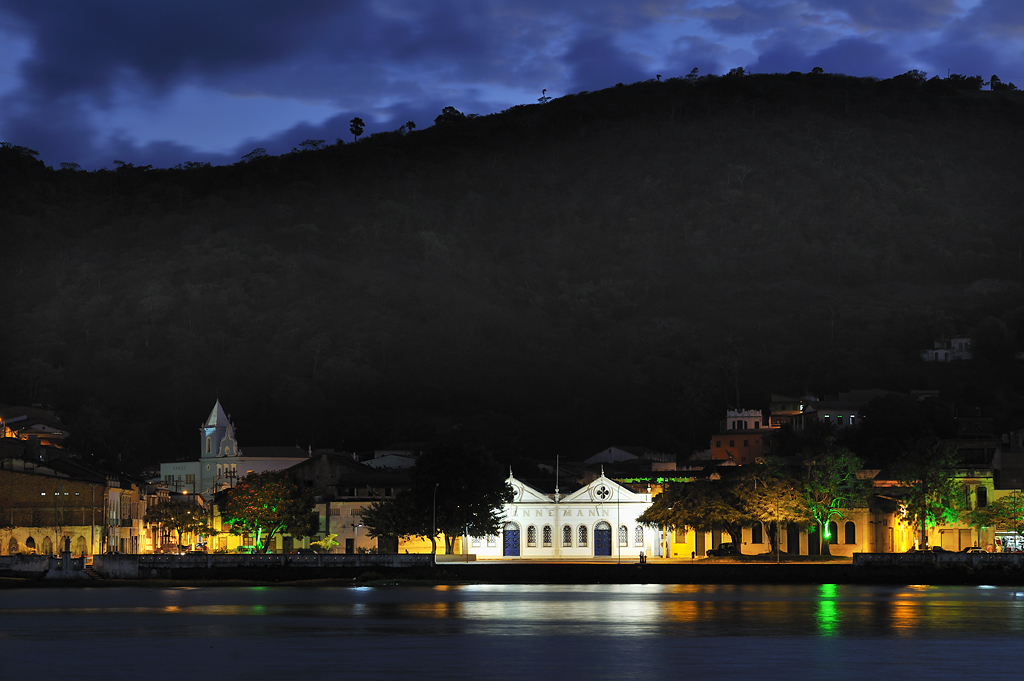
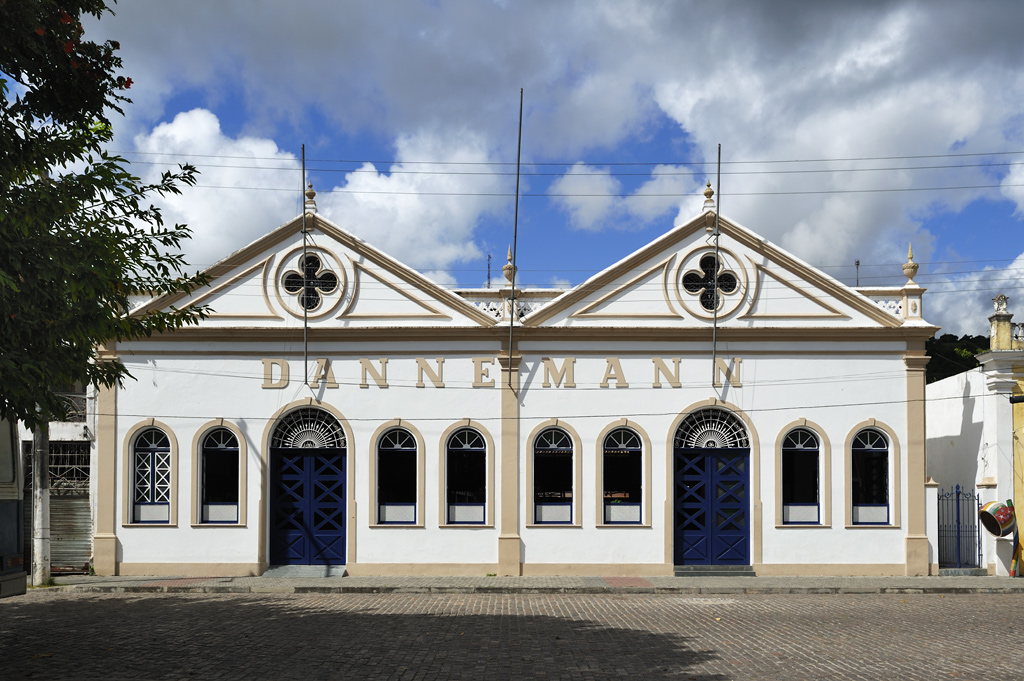
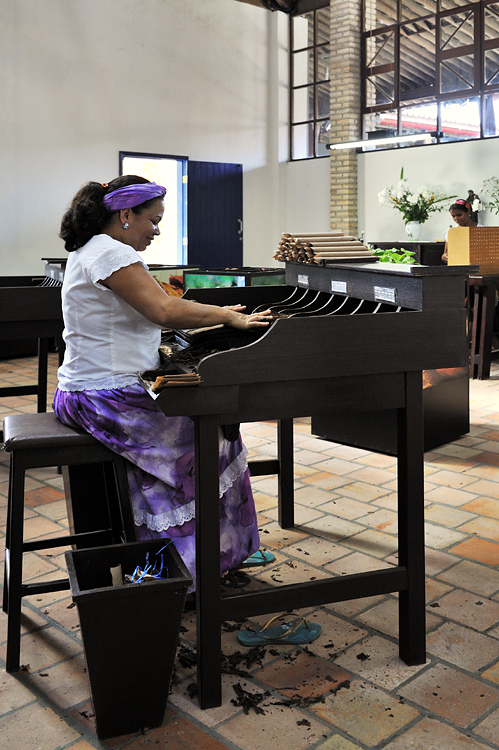
© Copyright: Photos and text: Jochen Weber
[TOP]
